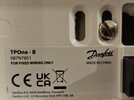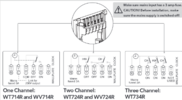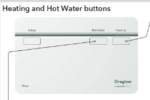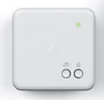Hi All
Kindly asking for help.
Just moved to a property that has Ideal Combi Boiler with 2 Zones.
Each Zone has its own Thermostat - Danfoss TPOne - B
The TPOne is battery operated and acts as a Thermostat and Programmer hence there is no standalone programmer near the boiler.
I have got Hive Mini and Receiver from my previous property where I installed without any problems.
The wiring in the TPOne is just 2 wires Brown and Black. How do I install Hive receiver which requires L, N, Earth plus switch Live?
Also behind the TPOne 2 wires are not attached to anything. Grey and Earth
Thanks in advance




Kindly asking for help.
Just moved to a property that has Ideal Combi Boiler with 2 Zones.
Each Zone has its own Thermostat - Danfoss TPOne - B
The TPOne is battery operated and acts as a Thermostat and Programmer hence there is no standalone programmer near the boiler.
I have got Hive Mini and Receiver from my previous property where I installed without any problems.
The wiring in the TPOne is just 2 wires Brown and Black. How do I install Hive receiver which requires L, N, Earth plus switch Live?
Also behind the TPOne 2 wires are not attached to anything. Grey and Earth
Thanks in advance





